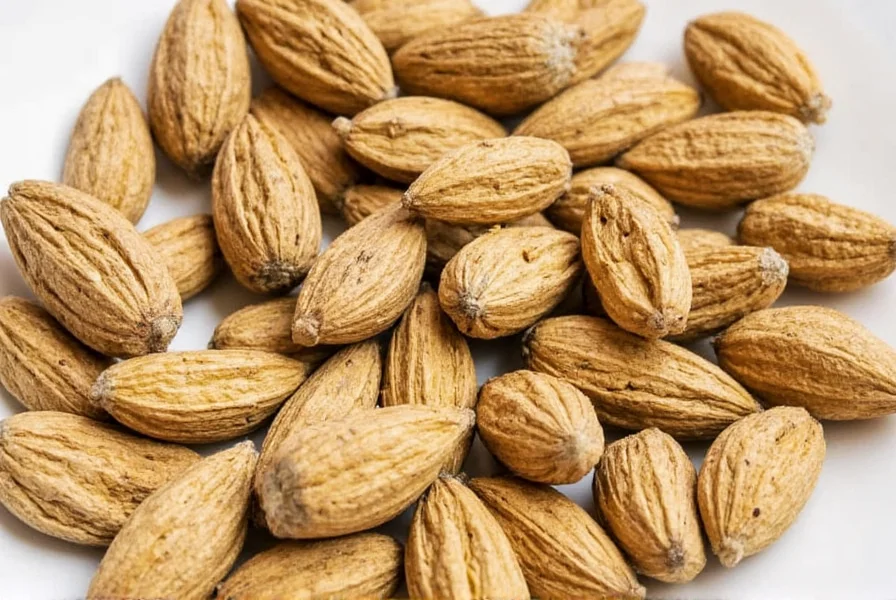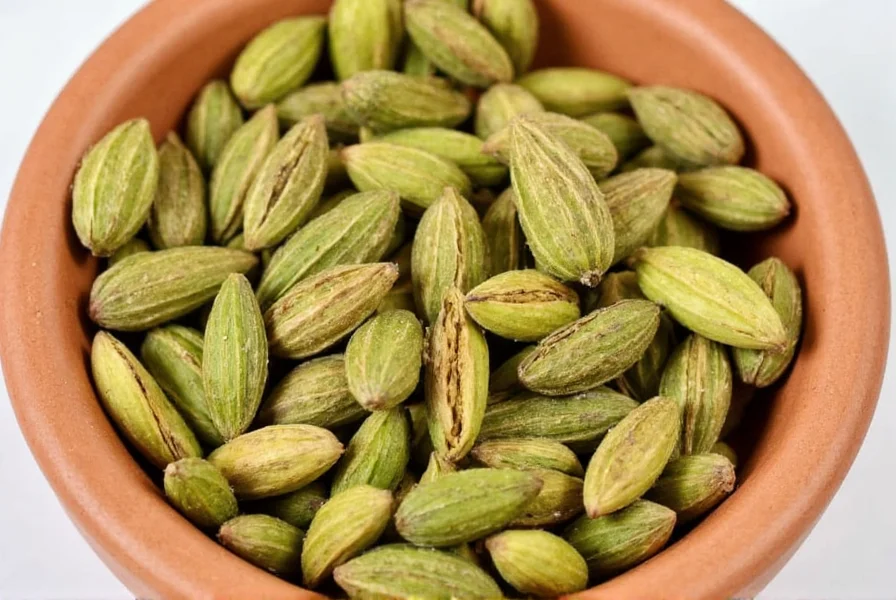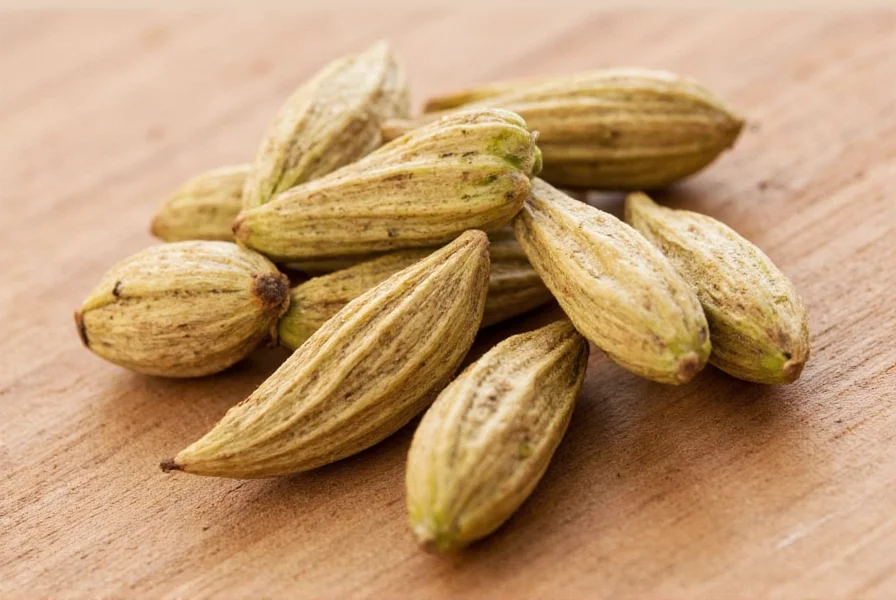Cardamom has been treasured for thousands of years across Middle Eastern, Indian, and Scandinavian cuisines. This versatile spice ranks as the third most expensive in the world after saffron and vanilla, reflecting its labor-intensive harvesting process where pods must be hand-picked before fully ripe.
Types of Cardamom Spice
| Type | Origin | Flavor Profile | Common Uses |
|---|---|---|---|
| Green Cardamom | India, Guatemala | Sweet, floral, citrusy, eucalyptus notes | Baking, chai tea, rice dishes, Scandinavian pastries |
| Black Cardamom | Himalayan region | Smoky, camphor-like, earthy | Indian curries, Chinese five-spice, meat dishes |
| Madagascar Cardamom | Madagascar | Milder, herbal | Specialty blends, modern fusion cuisine |
Culinary Applications of Cardamom
Chefs and home cooks value cardamom for its complex flavor that enhances both sweet and savory dishes. Green cardamom works beautifully in desserts like Swedish kardemummabullar buns and Indian kheer rice pudding. The seeds release maximum flavor when lightly crushed before use. For authentic Indian chai, add 3-4 green cardamom pods to your tea blend while simmering.
Black cardamom serves a different purpose in cooking—its intense smokiness makes it ideal for hearty dishes like biryanis and stews. Unlike green cardamom, you typically remove black cardamom pods before serving as they're too strong to eat directly. When substituting between varieties, remember that black cardamom has a much more pronounced flavor that can easily overwhelm delicate dishes.

Nutritional Profile and Potential Health Benefits
Cardamom contains valuable compounds including cineole, limonene, and terpinolene. A single teaspoon (2g) provides approximately:
- 13% of daily manganese needs
- 8% of iron requirements
- Small amounts of magnesium, calcium, and vitamin C
- Numerous antioxidants with anti-inflammatory properties
Research suggests cardamom may support digestive health by reducing spasms in the gastrointestinal tract. Traditional medicine systems have used it for centuries to freshen breath and support respiratory function. When making cardamom tea for digestion, steep 3 crushed pods in hot water for 10 minutes before straining.
Selecting and Storing Cardamom Properly
For the best flavor, purchase cardamom in pod form rather than pre-ground. Look for plump, olive-green pods that feel heavy for their size. When squeezed, quality pods should release aromatic oils. Avoid pods with visible cracks or excessive browning.
Store cardamom pods in an airtight container away from light and heat. Properly stored, they maintain peak flavor for 6-12 months. For extended freshness, keep them in the freezer where they'll retain quality for up to two years. Never store near strong-smelling foods as cardamom readily absorbs surrounding odors.
Cardamom Substitutes When Unavailable
If you don't have cardamom for your recipe, consider these alternatives:
- Cinnamon and ginger blend: Use 3 parts cinnamon to 1 part ginger for baking applications
- Nutmeg and allspice: Combine equal parts for savory dishes requiring warmth
- Cloves with a citrus zest: Provides similar complexity in mulled beverages
Remember that no substitute perfectly replicates cardamom's unique flavor profile. For authentic Middle Eastern or Indian dishes, seek out specialty markets where cardamom remains reasonably priced even in small quantities.
Cultural Significance Across Continents
Cardamom holds deep cultural importance worldwide. In India, it's traditionally offered to guests as a breath freshener after meals. Scandinavian countries consume more cardamom per capita than any other region, incorporating it into daily breads and pastries. Ancient Egyptians used it for oral hygiene, while Vikings reportedly brought it back from their travels to enhance their baked goods.
Today, cardamom remains integral to cultural celebrations—from Indian weddings where it flavors sweets symbolizing prosperity, to Scandinavian Christmas baking traditions. Understanding these cultural contexts enriches your appreciation when using cardamom in authentic recipes.

Practical Tips for Cooking with Cardamom
Maximize cardamom's flavor in your cooking with these professional techniques:
- Dry toast pods in a skillet for 60 seconds before crushing to intensify aroma
- Crush just before use as ground cardamom loses potency within weeks
- Use whole pods in rice dishes and remove before serving for subtle flavor infusion
- Make cardamom sugar by blending 1 cup sugar with 10 crushed pods for baking
When following recipes calling for “one pod,” remember this typically means the entire pod including seeds. For more intense flavor, remove seeds from pods and use only the black seeds inside. This technique works particularly well in Scandinavian baking where cardamom's floral notes should shine through.
Frequently Asked Questions
What's the difference between green and black cardamom?
Green cardamom has a sweet, floral flavor ideal for desserts and beverages, while black cardamom offers a smoky, camphorous taste better suited for savory dishes. They come from different plant species and shouldn't be used interchangeably in recipes requiring authentic flavor profiles.
How can I tell if my cardamom is still fresh?
Fresh cardamom pods should feel heavy, have a vibrant green color (for green cardamom), and release aromatic oils when squeezed. If pods feel light, appear dull, or don't emit a strong fragrance when crushed, they've likely lost potency and should be replaced.
Can I grow cardamom at home?
Cardamom requires tropical conditions to thrive—high humidity, warm temperatures (65-85°F), and indirect light. While challenging, it can be grown indoors in temperate climates with careful attention to moisture levels and filtered sunlight, typically reaching harvestable size in 2-3 years.
Is cardamom safe for daily consumption?
Yes, cardamom is generally safe when consumed in culinary amounts. Most people safely enjoy 1-3 pods daily in cooking or beverages. Those with gallstone issues should consult a healthcare provider, as cardamom may increase bile production. As with any spice, moderation is key.











 浙公网安备
33010002000092号
浙公网安备
33010002000092号 浙B2-20120091-4
浙B2-20120091-4